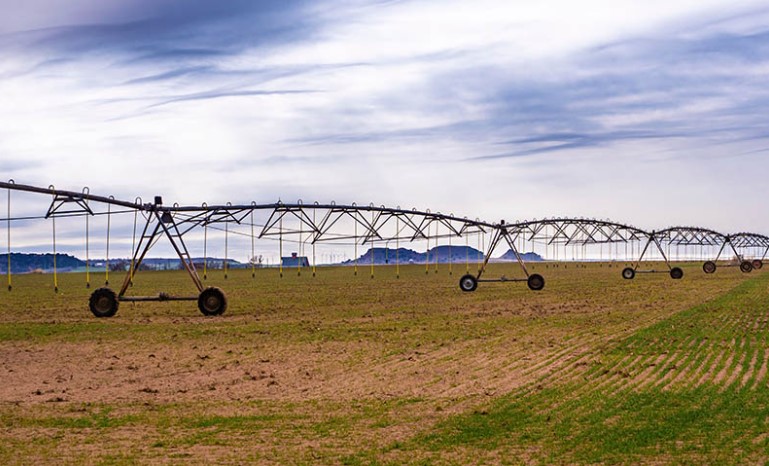
Agricultural News
OSU Researchers Studying the Use of Saline Water in Agriculture
Wed, 07 Sep 2022 09:09:32 CDT
 Oklahoma State University and the Oklahoma Water Resources Center are researching how to improve water availability in southwest Oklahoma.
Oklahoma State University and the Oklahoma Water Resources Center are researching how to improve water availability in southwest Oklahoma.
Water scarcity is a challenge in the region, according to Ali Mirchi, OSU assistant professor of water resources engineering. He said the declining water level in Lake Altus-Lugert limits the water supply for irrigated crops.
Mirchi said he and OWRC Director Kevin Wagner began discussing water salinity issues when he came to OSU in 2018.
“The 2011 drought spurred this conversation,” he said. “That drought basically halted all irrigation deliveries within the Lugert-Altus Irrigation District, which meant producers had to stop irrigating and couldn’t grow cotton. That caused major economic impacts on the region.”
Mirchi said most irrigated agricultural crops in Oklahoma are in the western part of the state. Cotton is a major crop in southwest Oklahoma and is considered salt-tolerant.
“That region is an example of an area where you have saline (salty) water as well as fresh water, which triggered the question, can we use saline water to increase the reliability of agricultural water supply in periods of water shortage?” he said.
Mirchi said saline water can be mixed with freshwater or directly applied to crops, depending on a crop’s salinity tolerance. Adding saline water to the fresh water from the reservoir could stretch available water supplies, but the catch is balancing the level of salinity so it does not harm the crops or soil.
“There are a lot of questions related to this,” Mirchi said. “With this research, we want to try to evaluate different scenarios of mixing naturally occurring saline water with freshwater in southwest Oklahoma.”
Before researchers can move forward with any kind of in-field testing, they must make sure the system will operate the way it should.
This is done through model-based testing in collaboration with researchers at Colorado State University and the University of Nebraska-Lincoln. The research team will use a new tool called SWAT-MODFLOW to evaluate scenarios of combining varying levels of saline water mixed with fresh water to answer scientific questions, such as:
Can naturally occurring saline water be used with fresh water in some way to increase agricultural water supply?
What would the impacts be on crop yields, soil salinity and the watershed health?
If someone applies too much saline water to the soil, can the salt be leached out by adding more fresh water?
“This is not just looking at one aspect of the problem. We want to come up with a technical framework to analyze these research questions,” Mirchi said.
The first step for Wagner’s team in building a framework is to collect the water quality data.
“We will track salinity as it moves through the surface water system and into groundwater wells to see how it changes throughout the year,” Wagner said. “The groundwater wells may be potential sources of saline or fresh water that could be blended with surface water for irrigation.”
Researchers are developing the data that will be used for the models by continuously monitoring seven surface water bodies and three groundwater wells in southwest Oklahoma.
Mirchi said OSU and OWRC researchers are not the only ones interested in the crop impacts of mixing saline water with fresh water. Producers and OSU Extension professionals also want to learn more.
“They are interested in managing salt water in some way for the benefit of agriculture, whether it is trying to reduce salinity or reverting some source of natural salt into the system or using these mixing alternatives,” he said. “They want to know what the impacts are on the land, on the crop yields and on downstream users. This watershed system contains multiple and varying geographic and geologic components. If you do something upstream, it’s going to impact someone downstream. That’s why we are very careful in analyzing salinity dynamics.”
WebReadyTM Powered by WireReady® NSI
Top Agricultural News
More Headlines...





